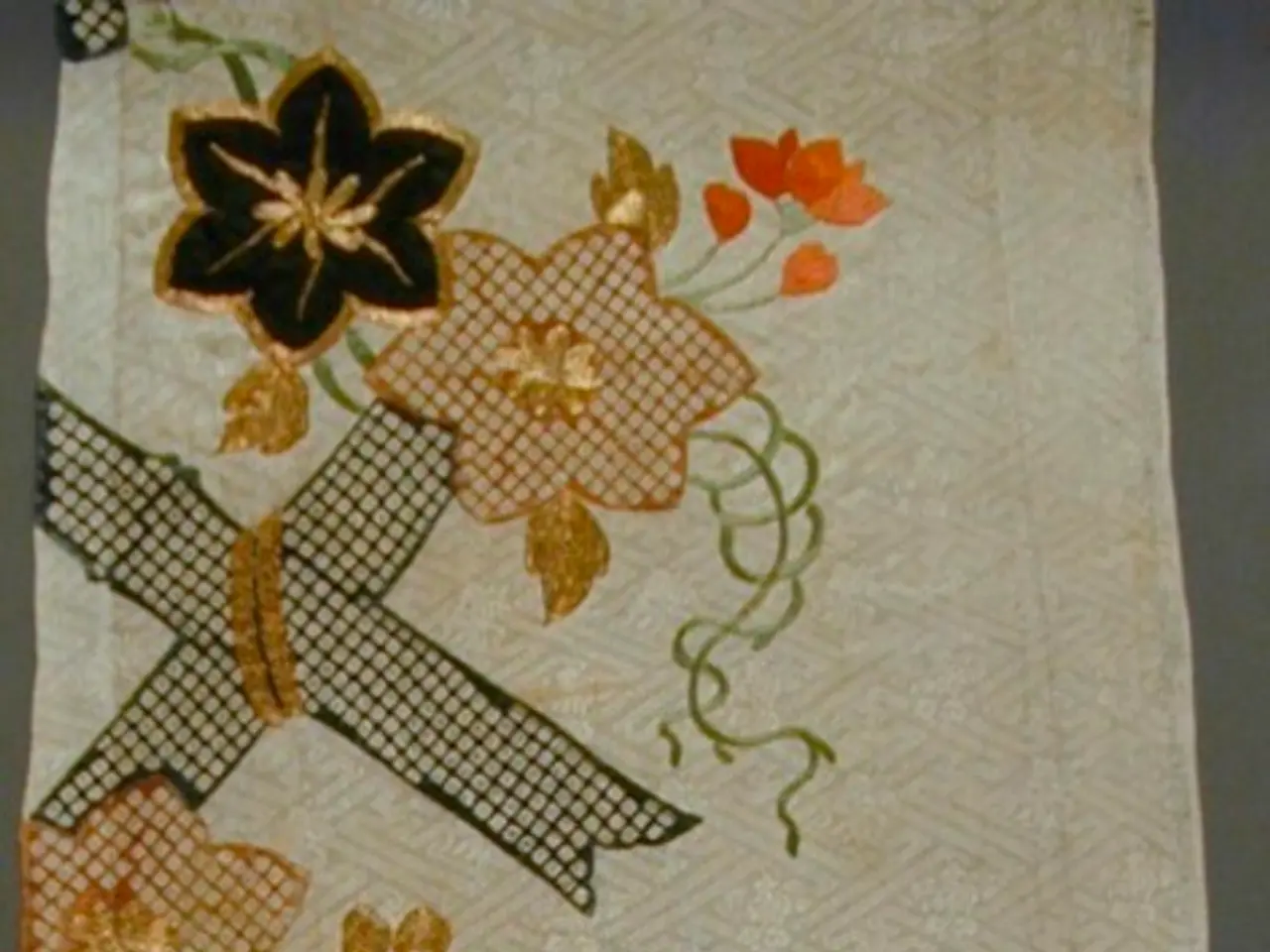Mastering the Art of Breathtaking 3D Fabric Sculptures
In the world of contemporary art, 3D fabric art stands out as a captivating and engaging medium. This art form, which involves manipulating fabric to create pop-out effects and sculptures, relies heavily on layering techniques, embellishments, and the strategic choice of fabrics, textures, and patterns.
One of the key elements in 3D fabric art is the use of brighter, lighter colours, which bring elements forward, creating a sense of depth and dimension. Tiny stitches, beads, or threads can introduce new textures and nuances, adding visual and tactile interest. On the other hand, rich, dark colours make parts of the art look deeper, creating a sense of depth and mystery.
The choice of fabric textures and patterns plays a significant role in 3D fabric art. Evaluating the fabric’s density, weight, thickness, thread count, and weave pattern is essential, as these structural elements affect how the fabric behaves when manipulated and how it holds shape in 3D work. Fabrics like cotton, linen, denim, canvas, velvet, felt, and boucle are often preferred due to their stable structure, which supports dimensional designs without excessive sagging or distortion.
Choosing fabrics that offer a variety of tactile sensations—rough, smooth, soft, or coarse—adds depth and richness to the piece. For example, velvet and felt provide luxurious, rich textures, ideal for creating areas that catch light differently and invite touch. Layering fabrics with contrasting textures can enhance the three-dimensional effect and make the art more engaging to the viewer.
Patterns should complement the 3D form rather than compete with it. Subtle, smaller-scale patterns or solid colours often work best to not overwhelm the 3D structure. Considering the interaction of patterns with shadows and shapes created by the fabric’s folds and layering is crucial, as patterns can enhance or detract from the perception of depth depending on their scale and contrast.
Mixed media techniques, such as applying textile hardeners to strengthen natural fabrics and enable more sculptural shaping without losing flexibility, allow artists to create air-dry pastes or clays combined with fabric for unique textures and structures. Combining different materials like wood, metal, fibres alongside textiles can add further dimensional interest and narrative depth to the art piece.
Balancing fabrics that can hold the desired shape but also resonate emotionally or thematically with the concept of the artwork is essential. The fabric’s tactile qualities can evoke specific feelings or cultural references.
In summary, selecting fabrics with structural stability and interesting textures, balancing patterns to emphasize rather than overshadow form, and considering mixed media enhancements to strengthen and texture your 3D fabric art are crucial steps in creating captivating and engaging art pieces. Experimentation with diverse natural materials and textile hardeners can also expand creative possibilities and elevate the tactile and visual impact of your pieces.
To preserve your 3D fabric art, it is recommended to wrap it in acid-free tissue paper before storing it, and to avoid direct sunlight to prevent fading of colours. Gently dusting the art regularly helps maintain its pristine look.
Curating with art gallery fabrics offers an exciting opportunity to blend creativity and design. Strategic color choices and detailed touches can bring 3D fabric art to life, adding an extra pop and making the artwork more visually appealing. A simple french knot or sequin can mimic dewdrops on a flower petal, for instance, creating a stunning visual effect.
Overall, 3D fabric art is a fascinating and versatile medium, offering endless possibilities for artists to express their creativity and engage viewers in a captivating, multi-dimensional experience.
- In the realm of home and garden decor, the strategic color choices and detailed touch points in art gallery fabrics can elevate a space, making it more visually appealing, similar to how subtle details in 3D fabric art bring elements to life.
- If you're a fashion-and-beauty enthusiast, experimenting with diverse natural materials and textile hardeners in fabric art could inspire new ideas for your own wardrobe, offering an opportunity to add unique textures and structures to your outfits.
- Food-and-drink connoisseurs might find intrigue in the careful balance between fabrics that maintain the desired shape and those that resonate thematically in 3D fabric art, mirroring the delicate balance required in crafting a gourmet meal with variety and cohesion.
- Car lovers can appreciate the importance of balancing structural stability with tactile sensations in 3D fabric art, much like the need for both responsive handling and comfortable interiors in designing a high-performance vehicle that appeals to drivers. And just as adding mixed media elements can enhance a 3D fabric art piece, innovations in car design, like integrating technology or unique materials, can create a more engaging driving experience.




